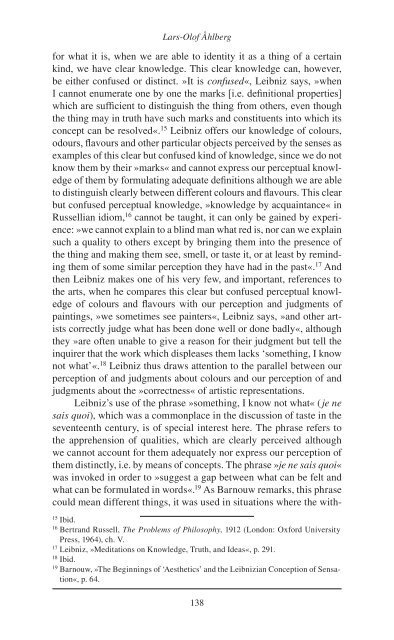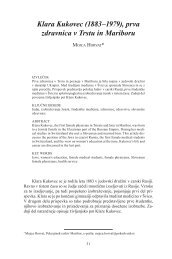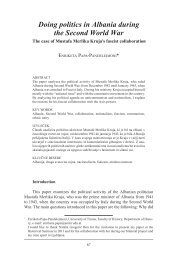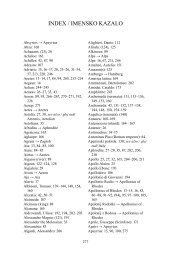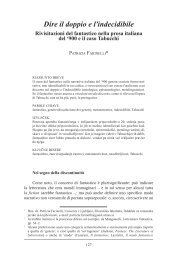The Invention of Modern Aesthetics: From Leibniz to Kant
The Invention of Modern Aesthetics: From Leibniz to Kant
The Invention of Modern Aesthetics: From Leibniz to Kant
Create successful ePaper yourself
Turn your PDF publications into a flip-book with our unique Google optimized e-Paper software.
Lars-Ol<strong>of</strong> Åhlberg<br />
for what it is, when we are able <strong>to</strong> identity it as a thing <strong>of</strong> a certain<br />
kind, we have clear knowledge. This clear knowledge can, however,<br />
be either confused or distinct. »It is confused«, <strong>Leibniz</strong> says, »when<br />
I cannot enumerate one by one the marks [i.e. deinitional properties]<br />
which are suficient <strong>to</strong> distinguish the thing from others, even though<br />
the thing may in truth have such marks and constituents in<strong>to</strong> which its<br />
concept can be resolved«. 15 <strong>Leibniz</strong> <strong>of</strong>fers our knowledge <strong>of</strong> colours,<br />
odours, lavours and other particular objects perceived by the senses as<br />
examples <strong>of</strong> this clear but confused kind <strong>of</strong> knowledge, since we do not<br />
know them by their »marks« and cannot express our perceptual knowledge<br />
<strong>of</strong> them by formulating adequate deinitions although we are able<br />
<strong>to</strong> distinguish clearly between different colours and lavours. This clear<br />
but confused perceptual knowledge, »knowledge by acquaintance« in<br />
Russellian idiom, 16 cannot be taught, it can only be gained by experience:<br />
»we cannot explain <strong>to</strong> a blind man what red is, nor can we explain<br />
such a quality <strong>to</strong> others except by bringing them in<strong>to</strong> the presence <strong>of</strong><br />
the thing and making them see, smell, or taste it, or at least by reminding<br />
them <strong>of</strong> some similar perception they have had in the past«. 17 And<br />
then <strong>Leibniz</strong> makes one <strong>of</strong> his very few, and important, references <strong>to</strong><br />
the arts, when he compares this clear but confused perceptual knowledge<br />
<strong>of</strong> colours and lavours with our perception and judgments <strong>of</strong><br />
paintings, »we sometimes see painters«, <strong>Leibniz</strong> says, »and other artists<br />
correctly judge what has been done well or done badly«, although<br />
they »are <strong>of</strong>ten unable <strong>to</strong> give a reason for their judgment but tell the<br />
inquirer that the work which displeases them lacks ‘something, I know<br />
not what’«. 18 <strong>Leibniz</strong> thus draws attention <strong>to</strong> the parallel between our<br />
perception <strong>of</strong> and judgments about colours and our perception <strong>of</strong> and<br />
judgments about the »correctness« <strong>of</strong> artistic representations.<br />
<strong>Leibniz</strong>’s use <strong>of</strong> the phrase »something, I know not what« (je ne<br />
sais quoi), which was a commonplace in the discussion <strong>of</strong> taste in the<br />
seventeenth century, is <strong>of</strong> special interest here. <strong>The</strong> phrase refers <strong>to</strong><br />
the apprehension <strong>of</strong> qualities, which are clearly perceived although<br />
we cannot account for them adequately nor express our perception <strong>of</strong><br />
them distinctly, i.e. by means <strong>of</strong> concepts. <strong>The</strong> phrase »je ne sais quoi«<br />
was invoked in order <strong>to</strong> »suggest a gap between what can be felt and<br />
what can be formulated in words«. 19 As Barnouw remarks, this phrase<br />
could mean different things, it was used in situations where the with-<br />
15<br />
Ibid.<br />
16<br />
Bertrand Russell, <strong>The</strong> Problems <strong>of</strong> Philosophy, 1912 (London: Oxford University<br />
Press, 1964), ch. V.<br />
17<br />
<strong>Leibniz</strong>, »Meditations on Knowledge, Truth, and Ideas«, p. 291.<br />
18<br />
Ibid.<br />
19<br />
Barnouw, »<strong>The</strong> Beginnings <strong>of</strong> ‘<strong>Aesthetics</strong>’ and the <strong>Leibniz</strong>ian Conception <strong>of</strong> Sensation«,<br />
p. 64.<br />
138


